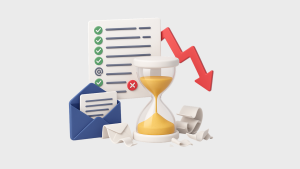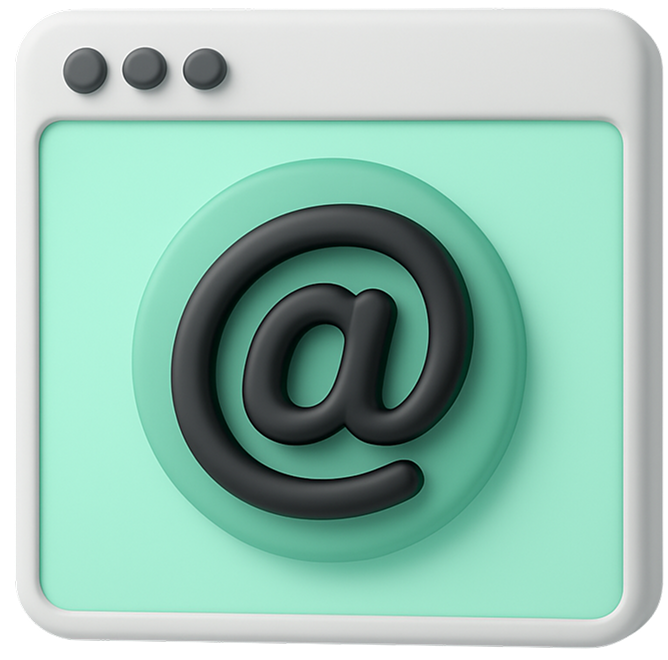In today’s data-driven marketing world, email validation is essential for anyone who sends or manages email campaigns. Whether you’re a marketer, developer, or business owner, validating your email addresses ensures messages reach real inboxes — not invalid or fake ones. It protects your sender reputation, reduces bounce rates, and boosts overall campaign ROI.
This guide covers:
- What email validation is and why it matters
- How email validation works behind the scenes
- Who needs it and when to use it
- Best email validation practices
- How to validate emails with third-party tools
- The most reputed email validation APIs
What is Email Validation?
Email validation is the process of checking whether an email address is accurate, deliverable, and safe to send to. It verifies that an email address is properly formatted, exists on a valid domain, and can receive mail.
he validation process typically includes:
- Syntax check – Ensures the email follows the correct format (e.g.,
name@domain.com). - Domain check – Confirms the domain is active and configured to receive messages.
- Mailbox verification – Uses an SMTP ping to verify the mailbox is real.
- Disposable email detection – Filters out temporary or one-time-use email addresses.
- Catch-all and role-based checks – Detects domains or addresses like info@ or sales@ that may not represent a specific person.
Why is Email Validation Important?
Email validation directly influences your email marketing performance.
Here’s why it matters:
- Improves deliverability by ensuring emails reach genuine inboxes.
- Reduces bounce rates and protects your domain from being blacklisted.
- Enhances sender reputation, a key factor in inbox placement.
- Saves money by preventing wasted sends on invalid contacts.
- Boosts campaign ROI by targeting only valid and active subscribers.
For a deeper understanding, explore our article:
👉 Why is Email Validation so Important for Email Marketing Experts?
Who Uses Email Validation?
Email validation is essential for:
- Email marketers who need clean lists for campaigns.
- E-commerce platforms that rely on order confirmations and notifications.
- SaaS products and CRMs to maintain high-quality user data.
- Developers integrating signup forms or authentication workflows.
In short, anyone who collects or sends emails at scale benefits from a validation system.
When Should You Validate Emails?
Email validation should be a continuous process, not a one-time task.
You should validate:
- In real time – As users enter emails in web forms or apps.
- Before campaigns – Clean your email lists before large sends.
- Regularly – Recheck data every few months, as lists naturally degrade over time.
Learn the difference between both approaches here:
👉 Real-Time vs Batch Email Validation: When to Use Each
Where is Email Validation Applied?
Email validation fits into multiple touchpoints, such as:
- Signup and contact forms – Prevents fake or mistyped addresses.
- CRM and marketing platforms – Ensures data accuracy.
- E-commerce checkouts – Reduces failed order notifications.
- Email automation systems – Keeps workflows smooth and bounce-free.
Best Email Validation Practices
Following best practices ensures you maintain a clean, reliable database:
- Validate at entry point – Use real-time APIs like Gamalogic to block bad data instantly.
- Perform regular bulk validations – Check older lists before major campaigns.
- Avoid sending to catch-all or role-based emails – These addresses often don’t convert.
- Remove inactive users periodically – Keeping engagement high protects your sender score.
- Use double opt-in – Ensures subscribers confirm ownership of the email.
- Monitor metrics – Track bounce rate, open rate, and spam complaints to measure effectiveness.
Email Validation with Third-Party Tools
When it comes to ensuring your email lists are accurate and deliverable, third-party email validation tools are the most reliable solution. These tools go beyond basic syntax checks — they verify domains, mailboxes, MX records, and detect disposable or role-based addresses.
There are several reputed third-party tools available for both real-time and bulk email verification. Some offer free credits or trials, while others provide Email validation API access to automate validation at the point of data entry — all aiming for high accuracy and reduced bounce rates.
Want to learn more about how APIs work and what makes them essential?
👉 The Complete Guide to Email Validation APIs | Features, Benefits, How to integrate & Best Tools
How they helps
- Comprehensive Multi-Layer Validation: These tools perform syntax, domain, MX, and mailbox verification to ensure every email is truly deliverable.
- Real-Time API Integration: Developers can integrate APIs into web forms or CRMs to validate emails instantly during sign-up or lead capture.
- Bulk Email List Cleaning: Upload thousands of addresses at once and receive clean, categorized reports in minutes.
- Reduced Bounce Rates & Spam Risks: By removing invalid or risky addresses, your sender reputation and deliverability improve.
- Time & Cost Efficiency: Automated verification eliminates manual checking, saving hours of work while maintaining precision.
For developers, check out this integration resource:
👉 How to Integrate an Email Validation API – A Developer’s Guide (Node.js / Python / cURL)
Top Reputed Tools for Email Validation
Here’s a look at some of the most trusted names in the email validation industry, each offering unique capabilities for businesses and developers.
1. Gamalogic Free Email Validation API
Gamalogic offers a developer-friendly and marketer-focused solution that combines real-time verification, bulk cleaning, and API integration — all in one platform.
Key Features of Gamalogic:
- Verify emails in real time through web forms, CRMs, or signup systems.
- Perform bulk validation by uploading large lists and get categorized results (valid, disposable, catch-all, role-based, etc.).
- Easy API integration with Node.js, Python, or cURL — ideal for SaaS, eCommerce, and CRM platforms.
- Detects temporary, fake, and invalid emails instantly to keep your list healthy.
2. ZeroBounce
A leading enterprise-grade validation platform, ZeroBounce offers deliverability insights, spam trap detection, and advanced scoring. It’s ideal for large-scale senders seeking analytics-rich reports.
3. NeverBounce
Known for accuracy and scalability, NeverBounce provides both API and bulk list validation solutions — suitable for email service providers and marketing automation systems.
4. BriteVerify
BriteVerify integrates smoothly with CRMs like HubSpot and Salesforce, enabling real-time email verification during form submissions or data imports.
Conclusion
In today’s data-driven marketing world, email validation is no longer optional — it’s a necessity for maintaining sender reputation, ensuring message delivery, and maximizing ROI.
By partnering with a trusted third-party email validation API like Gamalogic, you can automate verification, protect your campaigns from bounces, and keep your contact lists clean and active.
Start validating smarter — try the Gamalogic Free Email Validation API today and ensure every email you send reaches a real, engaged audience.
You might also like

Is Your Email List Decaying? Learn Why Validation is Key to Marketing Success
Over time, email lists naturally degrade—contacts change jobs, abandon accounts, or unsubscribe. This decline can hurt your open rates, damage your sender reputation, and waste marketing spend. Learn why regular email validation is essential to keep your list clean, your campaigns effective, and your ROI strong.

10 Critical Email Validation mistakes costing you subscribers and revenue
Are hidden email validation mistakes draining your subscribers and revenue? Discover the 10 most common errors businesses make—and how to fix them before they sabotage your marketing success.

The Ultimate Guide to Email Validation Best Practices for 2024
This comprehensive guide breaks down the best practices of email validation for 2024—covering everything from real-time verification to compliance and advanced filtering. Learn how tools like Gamalogic can help marketers boost deliverability, protect sender reputation, and keep email lists clean and conversion-ready.






 No credit card required
No credit card required


Post your Comment.